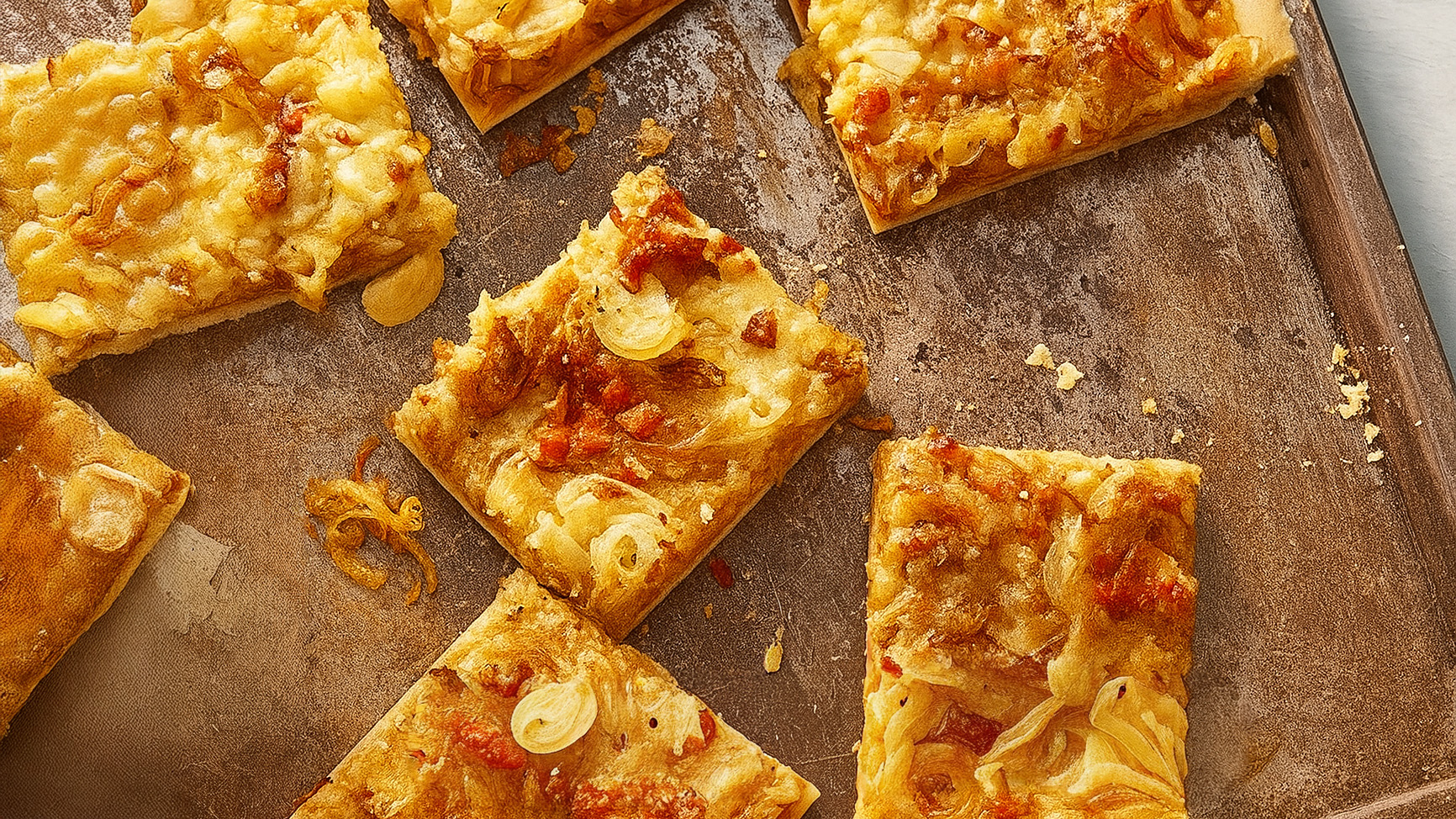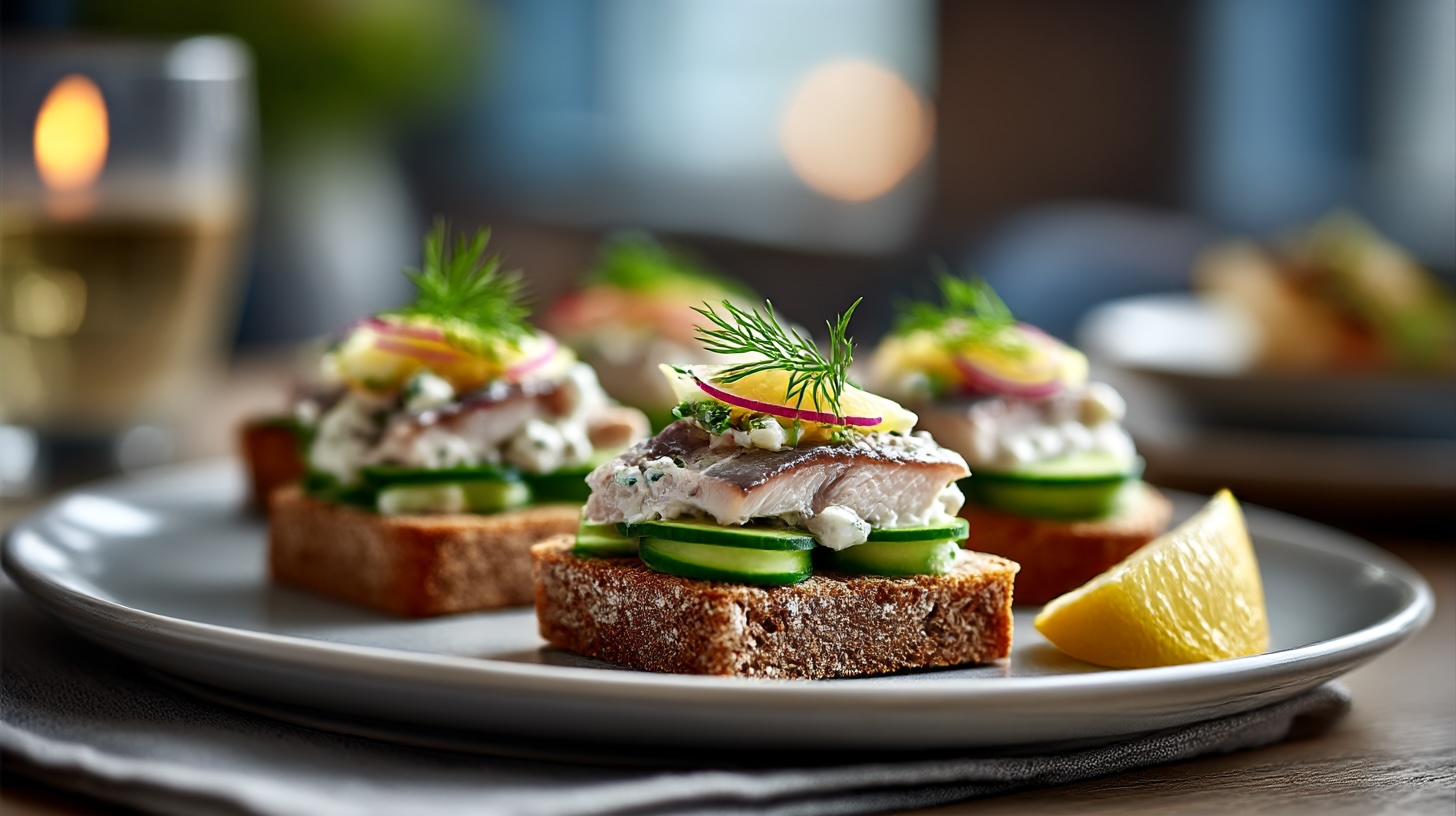Stargazy pie
Stargazy pie is not your average comfort food. It won’t win any beauty contests, unless the judges are into staring fish heads, protruding tails, and pastry with a suspicious glint of oil. It looks like something a mad fisherman dreamed up in a fever, and in a way, that’s not entirely wrong. This pie, with its fish peeking dramatically out of the crust like curious little sea creatures wondering why they’ve ended up in a starchy sarcophagus, carries centuries of Cornish pride, legend, and the kind of eccentric culinary stubbornness that only a windswept fishing village can sustain with a straight face.
Let’s set the scene properly, in all its salt-sprayed glory. Mousehole (pronounced “Mowzel,” of course, because Cornwall doesn’t play by phonetic rules) is a ridiculously picturesque village nestled on the south-western Cornish coast. Cobbled streets, fishing boats bobbing in a snug little harbour, and the kind of pastel-painted cottages that scream ‘quaint holiday rental’. But don’t be fooled by the twee exterior — Mousehole gets properly walloped by the Atlantic when the weather turns. In fact, storms here aren’t just bad, they’re biblical. The kind of weather that drives you to strong drink and even stronger storytelling.
It was in this briny, weather-beaten corner of England that Stargazy pie was born. And, like all good British food traditions worth their salt, its origin story features elements of hardship, heroism, and an undercurrent of near-starvation. The timeline is a bit wobbly — some say 16th century, others whisper 18th — but the legend is clear: Christmas Eve in Mousehole was bleak. The seas were too rough, no boats could sail, and the larder was emptier than a pub at closing time. Bellies grumbled. Morale nosedived. The villagers were preparing for a joyless, fishless Yule.
Enter Tom Bawcock, a local fisherman who presumably had more grit than sense. He decided that starvation was not on the cards this year, and against the howling gales and churning sea, he launched his boat. It was a mad thing to do, and it worked. He returned with a catch impressive enough to feed the entire village. To mark the occasion, the townsfolk baked the fish into a giant pie, heads and tails poking out in proud display, a sort of edible triumph that said, “Look what we’ve got, and you lot thought we were doomed.”
Ever since, on 23 December, Mousehole celebrates Tom Bawcock’s Eve with glowing lanterns, a grand procession, and of course, the infamous Stargazy pie. The dish has become a symbol of communal resilience, a reminder that sometimes the sea gives back, and a visual curiosity that doubles as both dinner and conversation starter.
Now, what makes Stargazy pie special, aside from its unsettling stare and complete lack of shame? It’s that rare dish that fully embraces its own oddity. Pilchards (or sardines, sometimes mackerel) poke their heads and sometimes tails out through the pastry lid like they’re observing the diners. But there’s a method to this marine madness. The heads allow the natural oils from the fish to seep back into the pie as it bakes, enriching the filling and keeping everything gloriously moist. And let’s be honest, nothing says British cuisine like food that tastes better than it looks.
It’s deeply savoury, unapologetically fishy, and delightfully old-fashioned. It pairs beautifully with dense, crusty bread, the kind that could double as a doorstop, and a mug of rough local cider that tastes like apples punched you in the mouth. It’s food with character, with stories baked right into its pastry seams.
Regional variations of Stargazy pie? Let’s not pretend this is a nationwide sensation. You’re unlikely to see a Stargazy pie on the menu at a Leeds gastropub. That said, within Cornwall, there are subtle spins. Some swap the traditional pilchards for herring or even dabble in sea bass if they’re aiming for the Michelin crowd. There are versions with eggs sliced neatly through the filling, or leeks sautéed in butter to add a bit of sweetness. Mustard-infused bechamel sometimes gets thrown in for body, particularly by chefs who can’t resist meddling. But the core remains the same: whole fish, thick pastry, and not a single ounce of self-consciousness.
The dish also speaks volumes about Cornish culinary culture. Cornwall, historically isolated and economically tough, has long relied on ingenuity. You make do with what the sea gives you, even if it’s a basket of fish with bulging eyes. Stargazy pie is about using every bit, not wasting a thing, and turning necessity into something oddly celebratory. It’s practical food wearing the mask of theatre.
In terms of pairing drinks with this proud beast, let’s talk survival. You need something that cuts through oil, complements salt, and matches the rusticity. Dry cider is your best bet — sharp, tannic, and nostalgic. It’s what the locals drink, and they’re rarely wrong. White wine? Sure, if you must. A Muscadet from the Loire Valley, or a cold Chablis if you’re playing it safe. The bold might opt for a chilled vermouth spritz, but be warned, the pie could win that showdown. As for beer, a Cornish bitter is ideal. Or go darker with a porter or stout — you’ll be surprised how those deep roasted notes bring out the fishiness in a good way. Strange, yes. But surprisingly effective.
When it comes to sides, lean into the earthy. New potatoes tossed in butter and sea salt, the kind that feel both indulgent and basic. A pile of pickled onions with a tang strong enough to reset your tastebuds. Wilted greens — kale, chard, maybe spinach — make a solid counterpoint, especially when cooked with garlic and lemon. You could even throw in a beetroot salad if you’re feeling brave and want to add some colour contrast to the plate. But keep dessert far, far away. This is not a sugar-friendly meal.
Health-wise, let’s not pretend this is part of your new year cleanse. It’s rich, oily, and proudly cloaked in pastry. But there are upsides. Sardines and pilchards are swimming in omega-3s, fantastic for heart health, brain function, and mood. The bones, if soft and cooked through, are a great source of calcium. There’s vitamin B12, selenium, and a nice whack of protein to keep you going. Think of it as health food disguised as medieval theatre. Just try not to think too hard about the butter content in the crust.
If you’re looking to try Stargazy pie in the wild, your best bet is Cornwall. Mousehole is ground zero, especially in late December when Tom Bawcock’s Eve transforms the town into a glowing winter fairytale. The pubs and bakeries roll out their best pies, and locals join in a kind of fish-themed revelry that defies description. Outside of that window, you might luck out in other parts of Cornwall where chefs cling to tradition. A few adventurous British restaurants elsewhere have put it on the menu as a novelty or homage, but it remains niche. Abroad? Good luck. This is not the sort of dish that gets international acclaim. It’s too weird, too honest. Which, frankly, is part of the charm.
If you’ve made it this far and still want to cook one yourself, congratulations. You are either very brave or very hungry. Here’s how to honour the legacy.
Stargazy pie Recipe
Start with six to eight fresh sardines or small mackerel. Clean and gut them, but for the love of folklore, keep those heads and tails intact. If your fishmonger gasps, tell them it’s for tradition. Fry a finely chopped onion and a couple of leeks in butter until soft. Add a clove or two of garlic, finely minced. Let the mixture cool slightly before stirring in a couple of chopped hard-boiled eggs, a good handful of chopped parsley, a glug of dry white wine or cider, and if you’re so inclined, a spoonful of English mustard or a splash of cream to bind it all together.
Roll out a sheet of shortcrust pastry and line a pie dish. Arrange the fish standing up, heads poking out over the rim like they’re watching for danger. Spoon the leek and egg mixture around them, tucking it in neatly. Roll out the top layer of pastry and carefully fit it over, making sure to slice openings for the fish heads to peer through. Crimp the edges with flair, brush with egg wash, and bake at 200°C for 30 to 35 minutes, until the crust is golden and the fish look sufficiently tragic.
Let it cool slightly before slicing. Serve with potatoes, greens, something tangy in a jar, and a drink that can hold its own. Raise your glass to Tom Bawcock, to the stubbornness of coastal tradition, and to the pie that dares to stare back.



